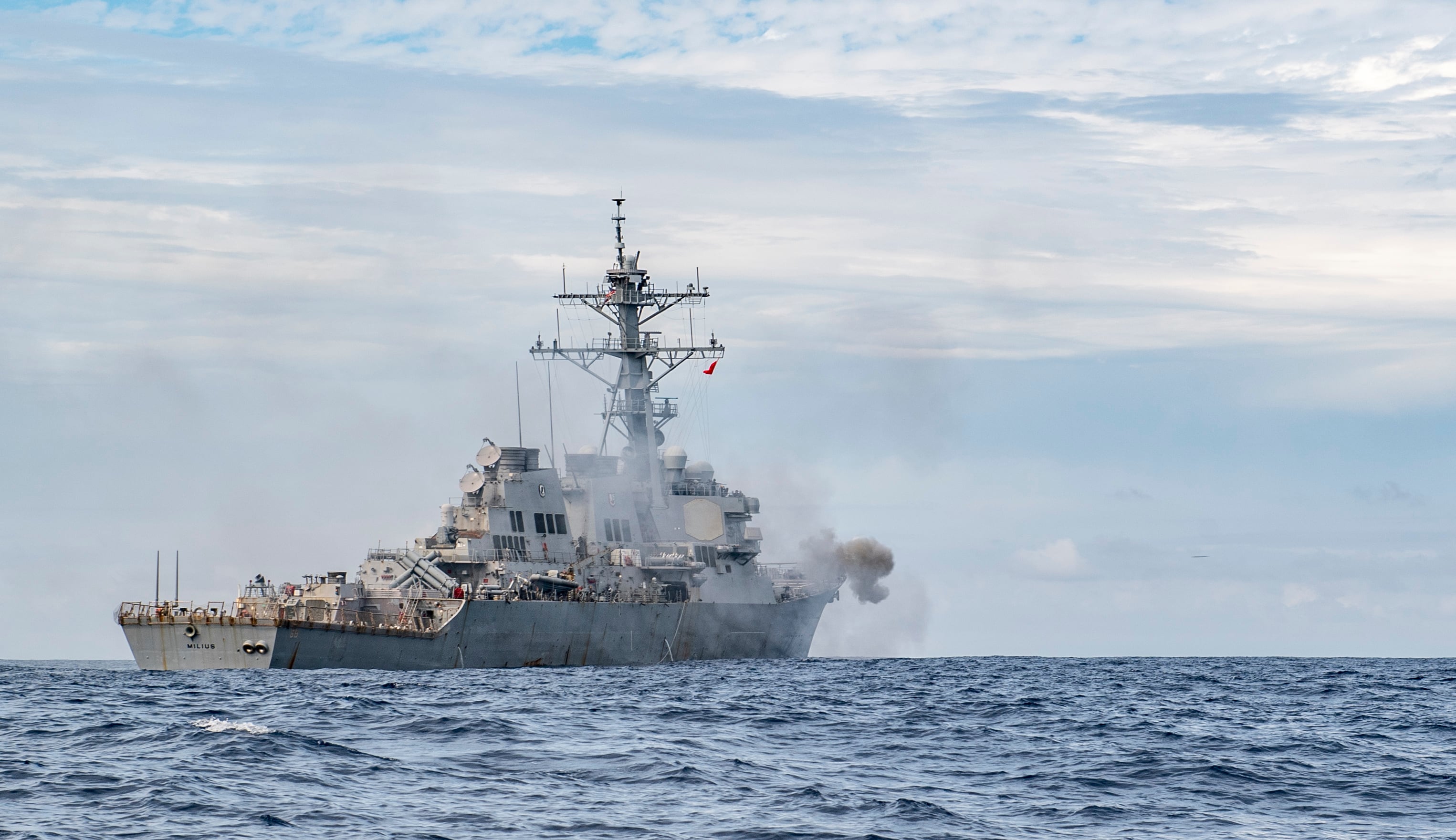While the world is combating the new coronavirus, COVID-19, China continues to fortify its islands in the South China Sea, with only muted response from the international community. Even the sinking of a Vietnamese fishing vessel brought minimal reaction from the international community, though the Philippines and U.S. military have made statements against the incident.
Prior to COVID-19, China’s “war without gunsmoke” strategy had already resulted in the near-normalization of its South China Sea military buildup and its “nine-dash line” claims. Since 2013 the “Great Wall of Sand” (so dubbed by former Pacific Fleet Commander Adm. Harry Harris) has become even more formidable. Combined with Chinese disregard for a 2016 Hague ruling that invalidated Chinese nine-dash line claims, it is obvious that China will continue to persist in its claims, as I detailed in a 2017 article for Foreign Policy.
Despite this, the United States, the United Nations and the Association of Southeast Asian Nations states can make headway by quickly acting in concert to prevent further garrisoning of the islands claimed by China in the South China Sea.
RELATED

At the present moment, China has runways and dozens of hangars for fighter aircraft on a handful of islands, as well as anti-ship cruise missiles, anti-aircraft batteries and missile defenses. The Chinese have used these islands to begin pressure campaigns in the Spratlys, Paracels and even the Natuna Sea (claimed by Indonesia).
Though they have refrained from mass fighter deployments to their island bases, in the event of a conflict, fighter squadrons would potentially be able to rapidly mobilize and use the hardened facilities as forward basing. The Chinese could then use the recently installed anti-ship, missile and air defenses to limit incursions into the South China Sea, effectively keeping an adversary at bay during an onset of hostilities. In effect, these islands should be considered an existential threat to Taiwan, since they mitigate the U.S.-led deterrence against an attempt at unification by force.
The U.S., U.N. and ASEAN should cooperate to counter these Chinese fortifications in the South China Sea, since each is harmed by inaction. The U.S. should encourage cooperation among ASEAN states and build stronger civil, economic, diplomatic and military ties with each of them to help mitigate the pressure from China and reassure them of U.S. support. Many Southeast Asian countries anticipated and hoped for more enforcement of the 2016 Permanent Court of Arbitration ruling from the U.S. and U.N., and a more sustained interest in the region would give them a welcome alternative to their ever-looming neighbor to the north.

The islands afford China bases from which it can intimidate ASEAN states into abandoning their claims or acquiescing to Chinese demands. China’s paramilitary forces and fishing vessels use the island bases as hubs from which to harass and even sink commercial ships from ASEAN countries. A coordinated, international response is necessary to curtail the success of China’s Monroe-esque Doctrine throughout Asia.
The U.N. has a vital role to play in ensuring that China adheres to international law and respects the sovereignty of other member states. Any country that does not uphold the law or support the international system should be pressured to do so by the U.N., lest its rulings become irrelevant. Increased U.N. support and participation in freedom of navigation patrols will help build sustained international pressure on China to cease further militarization of the South China Sea.
Bilateral negotiations always place the country opposite China at a disadvantage, but multilateral negotiations would give ASEAN more bargaining power. China will attempt to pressure each state individually, but if ASEAN members work in unison, they can force multilateral negotiations that exert more pressure on China to halt further harassment and territory encroachments.
Indonesia and Vietnam could be well-suited to take a leadership role in coordinating a unified ASEAN response with the United States. The U.S. could curtail expanding Chinese influence in Asia with a multilateral deal with Japan, South Korea, Mongolia and ASEAN states, similar to the Trans-Pacific Partnership initially implemented in 2015, but with more political and military components. Without a unified ASEAN initiative backed by the U.S. and key allies, Asian states will face a losing prisoner’s dilemma when attempting to resist Chinese attempts at bilateral pressure and coercion. In the face of pandemic, it is more important than ever that the United States supports ASEAN because China is waiting to swoop in to “help” while consolidating its influence and tightening its grip on the region.
The U.S., U.N. and ASEAN are all threatened by the seeming normalization of Chinese aggression and militarization of islands in the South China Sea. There must be a concerted and unified effort to counter the ongoing impacts of the island bases on international trade, the international rule of law and Southeast Asian security. If China’s expanding ring of influence and military footprint in the South China Sea are not effectively countered, then the U.S. will lose significant influence in Asia and have difficulty countering further Chinese economic and military adventurism, putting key allies and interests at risk.
U.S. Air Force Capt. David Geaney has had multiple assignments and deployments to the Middle East and the Pacific region. He has served as a panelist on the rise of China for the International Studies Association. The views expressed in this article are those of the author and do not necessarily reflect the official policy or position of the Air Force, the Defense Department or the U.S. government.






